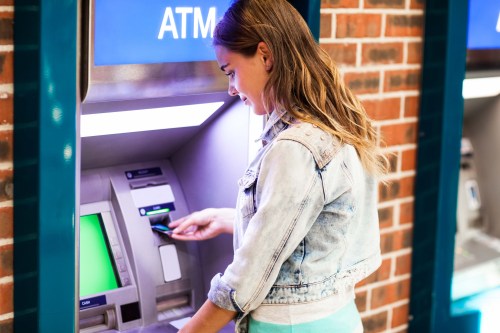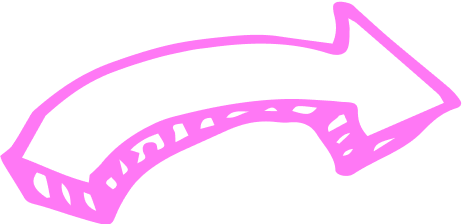Common Bank Terms and Definitions for Kids

When it’s time to start teaching your kids about money, a little prep will help make explaining banking terms a whole lot easier. Even if you have a firm grasp on financial basics, explaining the ins and outs of banking to a kid or teen may expose gaps in your own knowledge—and that’s nothing to be ashamed of.
In fact, it’s common: According to a 2019 Statistics Canada survey, 44 per cent of Canadian adults sought out educational resources to further understand their finances. Here, we’ve broken down the most common banking terms your kids and teens should understand.
Why understanding banking is important
Just like us, kids and teens may have questions about even the simplest concepts when it comes to banking. And they take cues from their parents—if you feel out of your league when it comes to discussing finances, they will probably pick up on that.
Before you begin, assess your own feelings about money. Be honest with yourself and your kids. Then, set a positive tone by letting your kids know that when questions do arise, you’ll look up the answers together. Tweens and teens love to one-up their parents—see if they can explain something to you!
Read more about the Canadian financial system.
28 common bank terms and what they mean
Below you’ll find a list of terminologies used in banking and their definitions. These will help introduce your kids to financial literacy at a comfortable level for everyone.
Account holder
An account holder is the person (or people) whose name is on a bank account. They’re able to make deposits, withdrawals, change information or preferences, and complete other transactions within the account.
Annual percentage rate (APR)
The annual percentage rate, or APR, is an annual interest rate applied to a variety of loans, such as a credit card. Basically, an APR is the cost of borrowing money from the bank compiled into a percentage of the total. This means it includes more than the interest rate—it incorporates any fees incurred by creating the loan, such as closing costs, insurance, or extra bank charges. You can have a fixed APR, which doesn’t fluctuate and remains the same amount as the day you took the loan; or you can have a variable APR that can fluctuate and is affected by changes in the prime rate (what interest rates are based on). Keep reading to learn more about prime rates.
Automated teller machine (ATM)
Also known as the “bank machine,” the ATM is where you can access your account using a debit or credit card, along with your personal identification number (PIN). From there, you can do all the usual things—deposit cash or cheques, withdraw money (up to a limit that you or your bank have set), pay a bill, or check your balance. Some ATMs even let you withdraw U.S. dollars.
Automatic bill payment
This is a time-saving feature that allows the account holder to set up a regular payment to a service (e.g., your internet provider), another account (e.g., transferring a percentage of your paycheque to a savings account), investments, a charity, or a vendor. It’s good practice for everyone to set up automatic bill payments, so bills are paid on time. But it still takes management: You’ll have to make sure there’s money in the account on the day that payment is set to come out.
Bank statement
This is a paper or digital overview of the activity on your account. A bank statement will show you exactly what’s gone into and out of your account during a set period of time (usually a month). Looking at your account statements will help monitor spending and saving.
Bank draft
A bank draft (sometimes called a “banker’s draft”) is very similar to a certified cheque (see below), except a bank draft is issued by the bank to a customer, while a certified cheque is written by the customer and authorized by the bank. Both come with a fee. A bank draft does not need to be signed by the payer, but is signed or certified by a bank official. This service guarantees the funds are there and is most often used for large purchases, such as first and last month’s rent.
Certified cheque
For the definition of a cheque, jump to the next entry and then meet us back here. When sharing larger sums of money, a vendor, institution, or organization may ask for a certified cheque. This means the cheque has been guaranteed by the bank to meet the promised funds (i.e., it won’t bounce). This reassures the third party that the money has been set aside from your account. You will need to go and see a bank teller in person, who will verify the funds, stamp or sign the cheque, and give you a copy. Note: There’s usually a fee for a certified cheque.

Cheque
Cheques are a bit of an analog banking item, but they’re still in use. A cheque is a piece of paper that has your chequing account and bank information on it. Once you fill out a cheque, it acts like a promise of funds fulfilled to the person to whom you’re giving money.
The account holder—you—writes in the date, the written and numerical amount of funds you’re giving to another party, and the name of the receiver, and then you sign it. The receiver takes this cheque to their bank, ATM, or opens the banking app on their smartphone and deposits the written funds into their account. When this is done, the amount will be withdrawn from your account.
Chequing account
A chequing account is where most people do their day-to-day transactions, like pay bills and make purchases, or receive an automatic paycheque (if you and your employer set this up). Your chequing account is typically connected to your debit card.
Credit limit
When you apply for a credit card, you’re given a limit on how much you can borrow. Typically, the limit is set based on an individual’s credit history, which shows how they’ve handled bill payments in the past. For teens applying for their first credit card, it’s good to opt for a card with a low limit, so there’s minimal risk of unmanageable debt. If a user tries to purchase an item that exceeds their credit limit, the card will likely be declined.
Credit score
Your credit score is based on your credit history, which, for most Canadians, starts when they get their first credit card. Knowing your credit score is a way for financial institutions to keep track of how you handle your finances, loans, and debts. Having a good credit score means you pay your bills on time, and lets the bank know that you’re reliable and a possible candidate for future loans or increased credit limits. Think of it like a report card—scores are usually between 300 and 900, and the higher the score, the better your credit is.
Learn more about how credit works.
Credit Union
A credit union is a financial institution, similar to a bank. By definition, credit unions by definition are financial co-operatives. This means that they’re owned and run by members—the people who deposit their money into them. Credit unions can exist for different communities, such as teachers, a town or region, or a place of worship. A credit union is also unlikely to help or offer financial products to anyone who doesn’t belong to the community they serve.
Learn more about banks vs credit unions: what is the difference?

Debit card
A debit card is a banking card connected to an account and protected by a PIN. Withdrawals and deposits using a debit card are in real time. The account holder must sign the card for it to be valid. Always keep your debit card in a safe place because the account holder’s name, signature, bank, and account number are on it. There is the option to have tap (or contactless payment) enabled, and this means you can tap a chip on your card onto an Interac machine and have the transaction go through without entering your PIN. If your card is stolen and tap is enabled, the thief could make automatic purchases. Most banks limit tap to $100, but some increased that to $250 during the COVID-19 pandemic to reduce contact or avoid having to pay with cash.
Learn more about debit cards for kids.
Direct deposit
This is when a regular payment (e.g., a paycheque or government benefit) or a one-off payment (like a tax refund) gets automatically deposited into your account. Once deposited, the money can be used immediately. For many, this is much more convenient than waiting for a cheque to arrive in the mail, and then depositing the funds into your account through an ATM or banking app on your phone.
Hold
A hold does what it sounds like—holds onto money—which may be placed on a cheque or account for various reasons. If you’re depositing a personal cheque into your account, for example, some banks will place a hold on it—which stops the payment—for a certain amount of time to ensure the money will go through. Four to eight business days is the legal limit a financial institution can hold a cheque. Another type of hold freezes activity on an account. An account hold, or freeze, is sometimes put in place by banks for suspicious activity, such as out-of-town purchases or large withdrawals. This is to protect both you and the bank from theft.
Interac e-transfer
When you need to pay someone for a service (like your dog walker) or owe someone money (when your pal nabs those Lizzo concert tix), an Interac e-transfer is a convenient banking feature you can use. You can immediately send money to the individual’s email address from your online bank account or banking app, and they can deposit the funds into their account right then and there.
Joint account
A joint account is an account with two (or more) equal holders who can use it however they please, but both have financial responsibility for the account. Joint bank accounts can be beneficial to couples, business partners, or even parents and teens.
Line of credit
Usually reserved for large or unexpected expenses (think renovations or a new car), a line of credit is a pre-approved loan with a set credit limit and interest rate. The amount of money you can borrow is based upon your financial stability—for example, your credit score, your income, or your savings. Some people who are approved for a line of credit take it without intending to touch the money that’s available to them—sort of like a backup emergency fund. Just know that once you dip into a line of credit, you will have to pay it back with interest. You can get a line of credit with a fixed or a variable rate.
Loan
A loan is an amount of money you apply to borrow from the bank. If you’re approved for a loan, the bank or other financial institution will lend you a set amount of money. In most cases, interest rates apply to the loan, meaning not only do you pay back the money you borrowed, but also the interest on top—a percentage added to the loan payment schedule. You will then have to pay this money back under specific terms, including any banking fees and repayment dates, that are agreed upon at the time of signing. Here’s a simple example: say you borrow $10,000, and the annual interest rate is 10 per cent. Over time, you will have to pay back the bank $11,000.
Minimum balance
Some banks will require you to maintain a certain amount of money in your chequing or savings account to cover any fees associated with keeping the account running.

Mortgage
A mortgage is a large loan the borrower uses to purchase a home or property. Mortgages are a type of secured loan, meaning the home itself guarantees the amount they’ve borrowed and acts as security for the lender (generally, a bank). If payments aren’t made, the lender could take possession of the home or property. When making a payment, you usually pay off a portion of the principal (the amount of the loan), plus interest. You can make mortgage payments monthly, weekly, or biweekly, and there is a set amount of time within which you must pay it back. Usually, a mortgage is paid off over many years.
Online banking
Online banking allows you to log in to a secure website or app and access your account(s). With online banking, you can set up preauthorized payments, transfer funds between accounts, send e-transfers, check balances, and more. Just like your PIN, keep your online banking login information and password secure and private.
Overdraft
Overdraft is when there isn’t enough money in your account to cover a purchase or payment. Say you e-transfer your friend $30 after she spotted you for an impromptu lunch out, but there’s only $20 in your account. Instead of the payment not going through, the bank will loan you that $10 that you didn’t have. After this transaction, your balance will read -$10, and you’ll have gone into overdraft.
While overdraft provides a little safety net in case your balance dips below zero, it’s good to remember that along with paying back that $10, you’ll likely be charged a fee as well as interest on the overdraft, which typically runs between 19 per cent and 22 per cent in Canada.
Personal identification number (PIN)
Your PIN is the code that unlocks your debit card at the ATM, or what you type into the keypad on the debit machine when making a purchase. You may also have a PIN on your credit card and for your online banking—these are sometimes all synced as one number. Make it something you can remember and keep it protected.

Preauthorized payment or preauthorized debit
This is a recurring payment or debit (such as a mortgage payment, a utility bill, an RRSP contribution, or a charitable donation) set up by the account holder. Preauthorized payments or debits are often used to pay bills. For instance, instead of sending a payment once a month to your cell phone provider, you can set up a preauthorized payment to come out of your account automatically on the same day each month. If you choose to go this route, make sure you have enough money in your account before the date that payment is set to withdraw. Otherwise, your account will go into overdraft (see above).
Prime rate
This annual interest rate, also called the “prime lending rate,” is used by banks and financial institutions when determining variable rates for products like loans, credit cards, mortgages, etc. The prime rate is set by the Bank of Canada.
Savings account
This is an account you can put money into and possibly earn interest on from the bank—that’s right, most banks will pay you a percentage of interest to keep your money in one of their savings accounts. Interest earned from savings accounts is taxable, as it’s considered income. Banks offer a variety of saving accounts to choose from, depending on your needs, and they’re a helpful way to save up for a big purchase or for your future.
Learn more about how to open your kids first savings account.
Variable rate
A variable rate is one that fluctuates according to the prime rate. It can be applied to interest, the APR, credit cards, loans, or mortgages—any type of financial transaction that requires a rate. When prime is low, the variable rate is low, so loan payments are less. But when the prime rate climbs, so does the variable rate on your loan, which means monthly payments will increase.
Why kids and teens should learn about bank terms
Knowing these key terms will help you explain basic banking concepts to your kids, which in turn will instill a sense of confidence as they head off into the world of financial independence (fingers crossed!). And incorporating the Mydoh app and the Smart Cash Card into your family finances is a great way to help set up your kids and teens for independence and success.
Download the Mydoh app and help build the foundation of financial literacy for your kids and teenagers.
This article offers general information only and is not intended as legal, financial or other professional advice. A professional advisor should be consulted regarding your specific situation. While the information presented is believed to be factual and current, its accuracy is not guaranteed and it should not be regarded as a complete analysis of the subjects discussed. All expressions of opinion reflect the judgment of the author(s) as of the date of publication and are subject to change. No endorsement of any third parties or their advice, opinions, information, products or services is expressly given or implied by Royal Bank of Canada or its affiliates.














